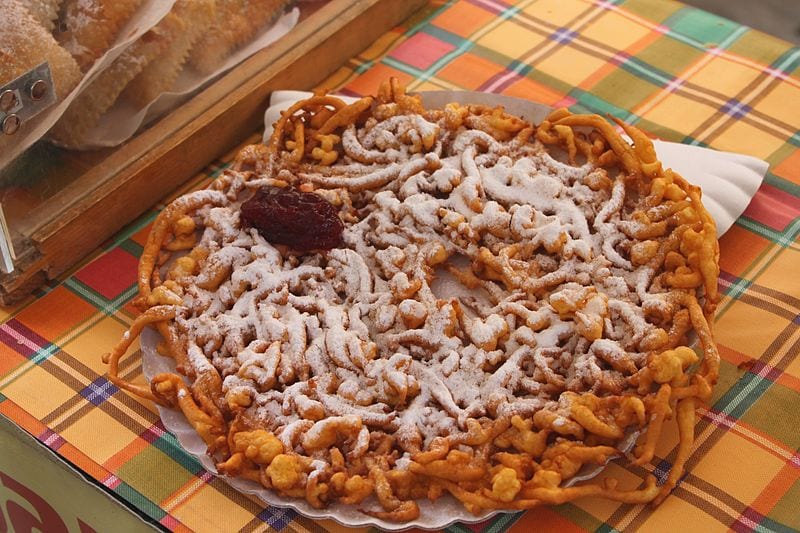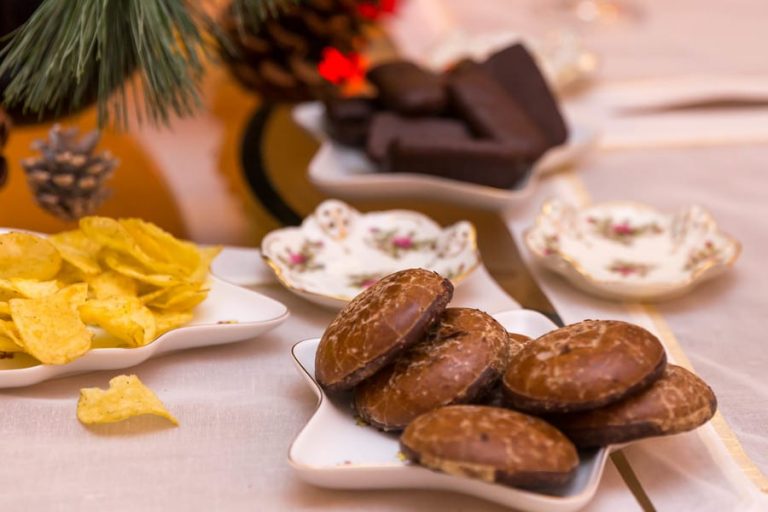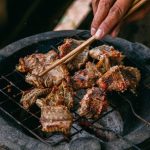Christmas in Trentino-Alto Adige
The typical spiced pastries of the Christmas markets, in various shapes (stars, hearts, crescents) often decorated with greeting phrases, have a very ancient origin: it was in 1409, as a matter of fact, that the word "lebkuchen" appeared for the first time in documents of the pastry chef guild of Nuremberg, the city from which these eventually spread throughout central Europe and also in South Tyrol. According to a number of hypotheses, the term could derive from the Latin "libum," which means "flattened." The original recipe includes marzipan, nuts, honey, eggs, sugar, candied citrus fruits and then many spices, from cinnamon to ginger, from cloves to anise. Another typical pastry of Trentino-Alto Adige - and of all Germanic countries - once again using cinnamon, but together with lemon are the snow stars (or zimtsterne), biscuits made with almonds, egg whites, confectioner's sugar, lemon juice, cinnamon and salt.

Candied fruit and fried food in Trentino
If spices are essential, candied fruit and dried fruit are equally important in Trentino, the protagonists of the "zelten," a cake rich in almonds, pine nuts, dried figs, walnuts and sultanas, born as a winter dessert and then later a symbol of Christmas over time and, more generally, of Trentino pastry art. But the holidays are also the ideal opportunity to indulge in a few more exceptions to the rule. So bring on the fried food, with strauben, hen-shaped pastries typical of Trentino Alto Adige, made with flour, butter, milk, grappa, eggs and olive oil. The name derives from the German straub, or "curled," "ruffled," to underline the particular shape of the pastry, a long rope of batter rolled up on itself and fried in boiling oil. It is enjoyed paired with cranberry jam.


 Farewell cacio e pepe in New York. "With tariffs, Pecorino Romano will also become more expensive." The warning from Giuseppe Di Martino
Farewell cacio e pepe in New York. "With tariffs, Pecorino Romano will also become more expensive." The warning from Giuseppe Di Martino Against tariffs? Here are the US foods that could be "hit"
Against tariffs? Here are the US foods that could be "hit" US tariffs: here are the Italian wines most at risk, from Pinot Grigio to Chianti Classico
US tariffs: here are the Italian wines most at risk, from Pinot Grigio to Chianti Classico "With U.S. tariffs, buffalo mozzarella will cost almost double. We're ruined." The outburst of an Italian chef in Miami
"With U.S. tariffs, buffalo mozzarella will cost almost double. We're ruined." The outburst of an Italian chef in Miami "With US tariffs, extremely high risk for Italian wine: strike deals with buyers immediately to absorb extra costs." UIV’s proposal
"With US tariffs, extremely high risk for Italian wine: strike deals with buyers immediately to absorb extra costs." UIV’s proposal







